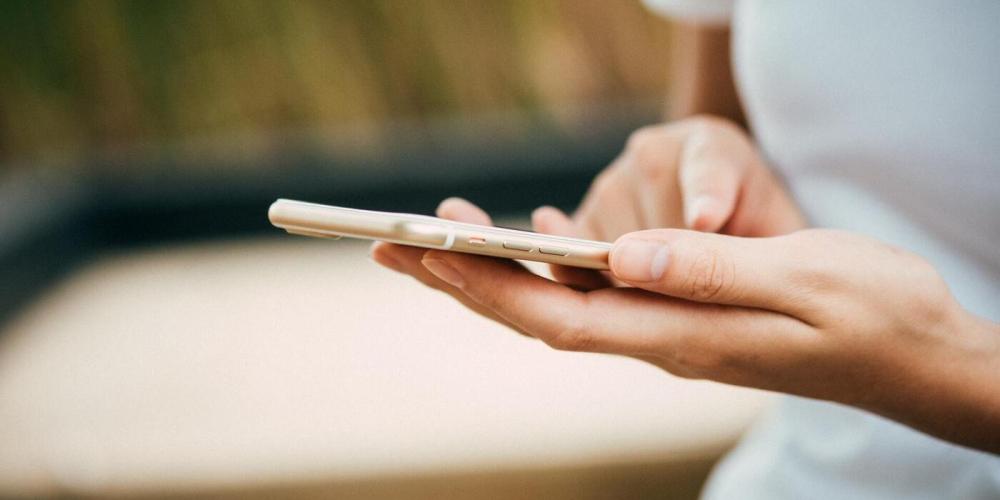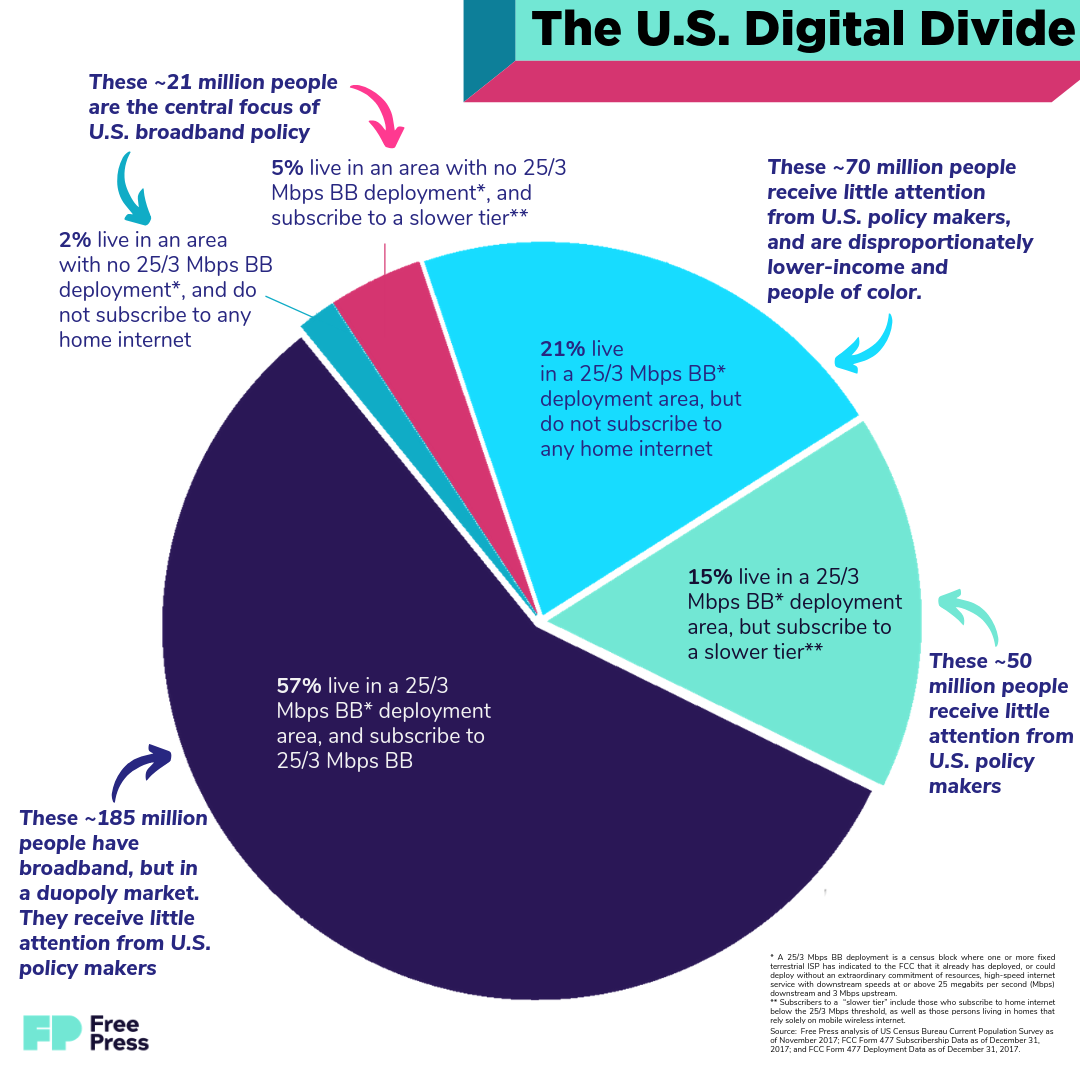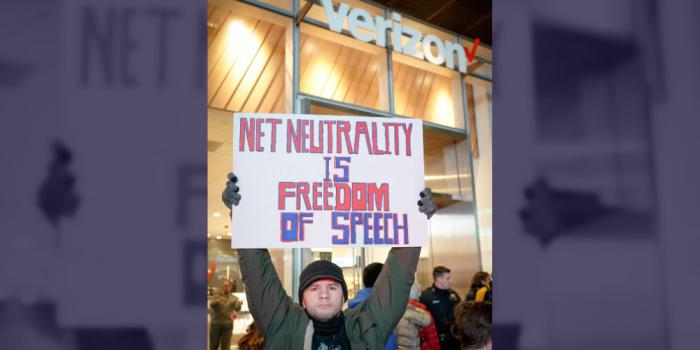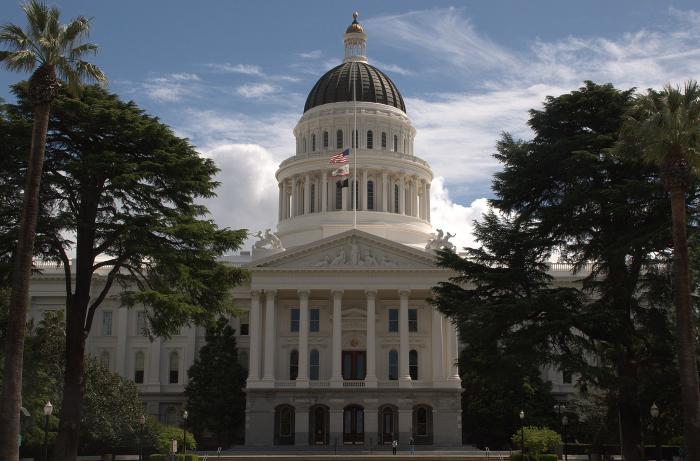How to Report on the Digital Divide & COVID-19

Right now an affordable internet connection can be the difference between being employed and unemployed, healthy or sick, connected with the outside world or isolated.
As the COVID-19 pandemic forces students out of classrooms and workers out of work, the digital divide in our communities has become more visible than ever. Journalists can and should be working to tell communities’ stories about digital inequities. And it’s no longer an issue relegated just to the tech and telecom beats: Reporters covering education, labor and other community issues are seeing how essential affordable and accessible internet is to everything we do.
If you’re new to covering this topic, don’t worry. We’re going to break it down for you, provide some resources and offer questions to consider as you report on the digital divide.
And make sure you check out Free Press’ work fighting for universal and affordable access for all communities, as well as our 2016 report, Digital Denied, which examines and exposes links between the digital divide and systemic racial discrimination in America.
What is the digital divide?
The digital divide is actually made up of multiple divides that layer on top of each other.
There’s a deployment divide — some people have a choice between multiple internet providers, some have only one option and some people have no providers serving their homes. People with only one internet provider have no recourse to take their business elsewhere if the company does something shady, or jacks up its prices. People with no provider simply can’t get broadband at all.
Having no provider is a serious problem, but it’s also a narrow one. According to the Federal Communications Commission, only 7 percent of people live in an area where no broadband-speed services are offered. Other researchers suggest a higher number, but even those estimates are still smaller than the number of people who do have access but don’t subscribe.
Even among those who have at least one option, there’s an adoption divide between those who actually subscribe to home broadband, and those who can’t afford it. This divide is one of the largest: Based on analysis of FCC and census data, Free Press estimates that approximately 70 million people live in an area where broadband is deployed, but they still don’t subscribe:

And with broadband prices always rising, it’s clear that unaffordable rates are largely driving this non-adoption. This divide is particularly important right now, when millions of people are losing their jobs and incomes as a result of the coronavirus pandemic.
And even among those who adopt, there’s a divide between those who have wired home internet and those who rely exclusively on mobile broadband for connectivity. Mobile service is certainly better than nothing, but mobile-only homes are more often restricted by data caps and the types of devices that can use a mobile connection. Imagine trying to write a research paper, apply for jobs or do your taxes on a mobile phone. For 8 percent of the people in this country, that’s a painful reality.
Another aspect of the digital divide that COVID-19 has exacerbated is the divide between those who have enough devices and those who don’t. Families that normally have plenty of home connectivity may now find themselves scrounging for extra laptops so that adults can work remotely while children simultaneously attend online classes. This is another area in which device affordability and household wealth become determining factors.
Who’s on the wrong side of the divide?
The digital divide is not just a problem for rural communities, as it’s often portrayed in media coverage. Low-income people and communities of color in all regions are disproportionately less likely to adopt home broadband — and when they do, they’re more likely to be solely reliant on cheaper but less robust mobile services.
Racial and economic gaps are powerful even in rural areas: In 2014, people of color made up 15 percent of the total rural population, but accounted for 21 percent of the rural population that had no wired internet service providers (ISPs) offering speeds of 3 mbps or higher.
According to census data, only 56 percent of households making less than $20,000 have home broadband, compared to 90 percent of those making more than $100,000. Black and Hispanic households still lag behind their white counterparts, even when we control for income differences. Lack of affordability is the primary factor driving the adoption divide, and systemic racial discrimination plays a distinct role as well.
Racial discrimination has driven poverty over the course of generations to create these systemic inequities — exacerbated by a broadband market where little to no competition exists to drive prices lower and prompt companies to actually serve marginalized communities.
This is why the distinction between the access divide and the adoption divide is so important: Rural areas experience more access problems than urban areas, but marginalized people across all geographies experience more affordability and adoption problems. And the affordability and adoption gaps are much larger, and generally get far less attention from our media and our policymakers.
That means that even for journalists serving primarily urban and suburban areas, there are likely many people stranded by the digital divide whose stories deserve attention.
Asking the right questions
The digital divide is layered and complex, and it compounds generations of racial and economic injustices. The COVID-19 pandemic has shone an urgent spotlight on these longstanding inequities. Our communities need information, and they need journalists ready to ask questions rooted in empathy and solidarity.
Here are a few questions to consider:
- What are local ISPs doing to make broadband more affordable not just for new customers, but for low-income folks, people of color and everyone hit by the crisis?
- Have local ISPs taken the FCC’s pledge to suspend disconnections, suspend late fees and open hotspots? Are these companies still enforcing data caps?
- When school districts close, are students expected to go online to keep up with classwork and assignments?
- Do the school districts know how many students lack adequate home internet and devices? Do they have a plan to loan Wi-Fi hotspots or computers to those students?
- What are localities, states and the federal government doing to help people get and stay connected? For example, federal stimulus efforts have considered expanding the FCC’s Lifeline and e-Rate programs (which respectively offer subsidies for communications services to low-income households and schools) to support affordable broadband adoption — but have so far failed to deliver.
- Who is being overlooked? Think about students, parents, teachers, workers, unhoused families, disabled folks, minimum-wage households and communities of color.
How do these digital divides relate to other inequities and to our history? Nothing exists in a vacuum. We need urgent answers to this crisis, but we also need to understand the context that has created a society where only some of us are connected.
Data dilemmas
There’s a lot of data out there about the digital divide, and not all of it is clear or helpful. Whenever you’re looking at a study on the digital divide, check the methodology to see which divides the study is actually analyzing. Are they measuring broadband deployment or adoption? Mobile or wired? Internet access or internet use? These are important distinctions.
Here’s a quick primer on some of the most common and useful data sources:
- National Broadband Map. The FCC builds this map using information ISPs report — also known as Form 477 data — about where they offer broadband service. While Form 477 includes some data about the number of subscribers each ISP reports, it’s primarily a measure of where broadband networks are deployed, not whether people have adopted those services. These maps do have some problems, but they remain the most comprehensive data we currently have about national broadband access.
- Census data. The U.S. Census Bureau’s Internet and Computer Use Supplement and American Community Survey contains important data about broadband adoption and computer and device use. The survey also breaks down adoption rates by income bracket and racial and ethnic groups. Free Press has relied primarily on census data for our work showing racial and economic digital divides. For more information on our findings, check out our 2016 report, Digital Denied, as well as this blog post on our study.
- Pew Research Center. Pew has released a variety of interesting reports on broadband adoption and other digital inequities. But there’s one main caveat: Due to the framing of its questions on mobile broadband, it’s likely that Pew overestimates the number of mobile-only households. (Census data used to have this same problem, but largely fixed it in 2017.)
- Performance metrics. Numerous measures exist to assess how well or poorly broadband connections are performing in the real world — for example, by measuring the actual usage and speed of connections. These metrics include the FCC’s Measuring Broadband America program, M-Lab, Ookla and a recent Microsoft study. All these methods attempt to measure broadband performance (rather than adoption or deployment).
But they don’t always reflect reality due to the self-selected nature of the tests, and how they each attempt to account for outstanding factors that could impact results, such as users’ Wi-Fi set-ups, or their decision to subscribe to a slower tier even when faster tiers are available. That’s not just a deployment problem or a case of the ISP failing to deliver on its promises; it’s once again a question about affordability.
Many states, localities and independent organizations also do their own studies about local broadband access and adoption. For example, the City of Seattle regularly releases a Technology and Access and Adoption Study, and the California Emerging Technology Fund performs its own statewide analysis.
To weather this pandemic, we must urgently bridge all layers of the digital divide. Getting and keeping people connected is a life-and-death issue right now. As part of this effort, reporters can play a crucial role in telling their communities’ stories.





